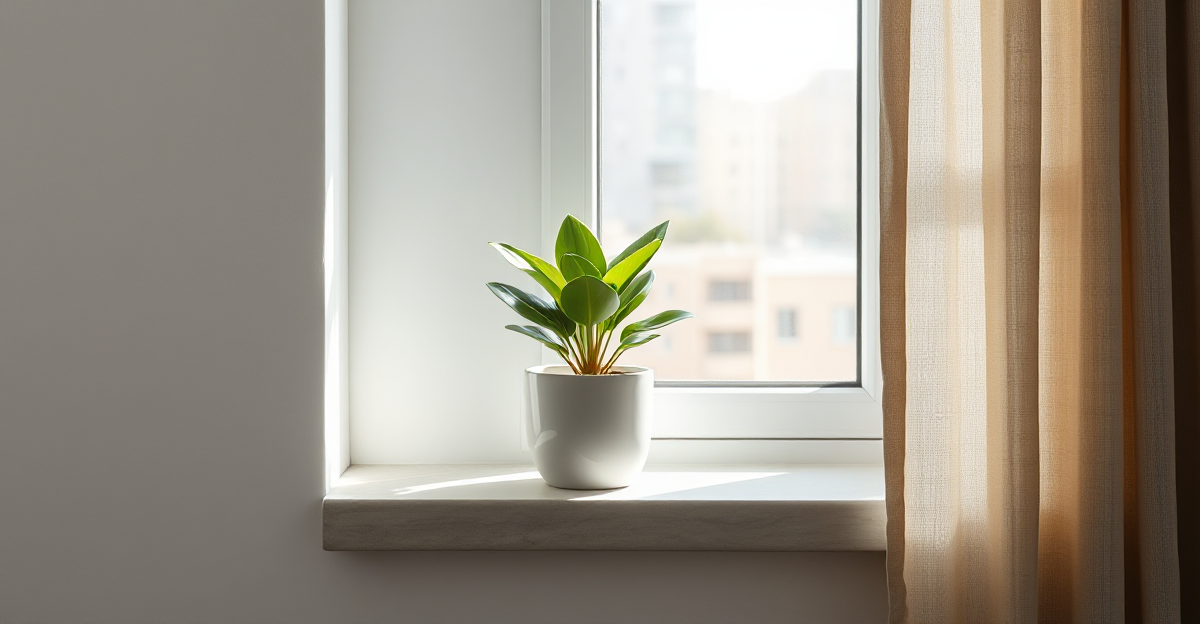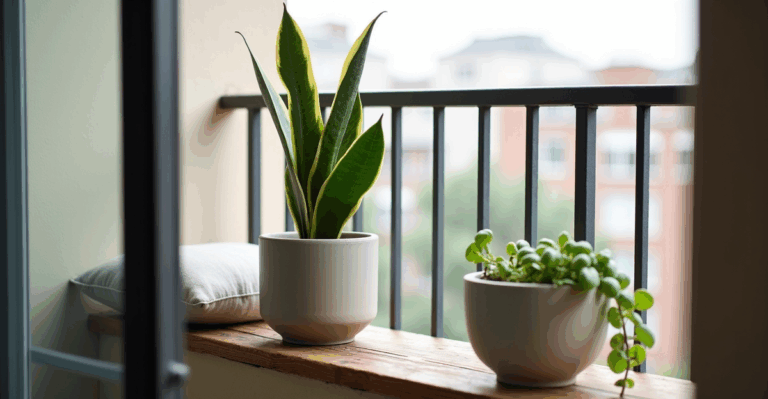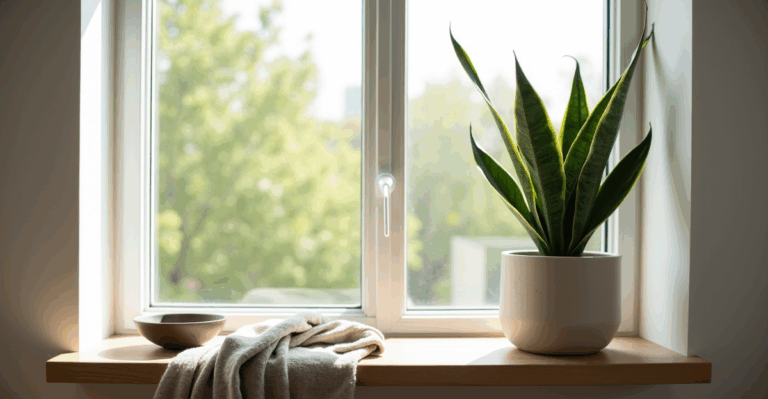Your South Window Just Got a Tiny, Perfect Fit: Styling ZZ Plants Without the Bulk
That south-facing window in your living room or home office? It’s probably a wasted space right now—maybe holding a single, sun-scorched Pothos or a dusty fiddle leaf that’s barely surviving. Or worse, it’s too bright for most plants, leaving you frustrated. But here’s what we’ve learned from thousands of plant lovers: the ZZ plant isn’t just tolerant of that intense south light—it thrives there, and it’s the perfect candidate for a small-space display. No giant pots. No messy drainage. Just a low-maintenance, architectural statement that fits where other plants wouldn’t dare.
We’ve seen the same mistake repeated over and over: people cramging bulky ceramic pots or heavy terra cotta into narrow window sills, blocking light and creating a visual clutter. Or worse, they choose plants that need humidity (like Calathea) for a sunny window, then watch them wilt. The ZZ plant avoids all that. It’s a slow grower with thick, waxy leaves that handle direct sun (especially in the morning), forgives occasional neglect, and wants its roots to dry out fully between waterings. That means it’s the ideal partner for tight spaces where you can’t afford to overwater or where window sills are narrow.
Let’s get practical. Styling a ZZ in a south window isn’t about forcing it into a big pot. It’s about working with its needs and the space you have. Here’s how we do it—without the hype, just real talk.
1. Fix the Light: It’s Not Just “Bright,” It’s Seasonal (and You’re Probably Overdoing It)
South-facing windows get the strongest, most direct sun—especially in summer. But here’s the nuance most miss: in winter, the light is weaker, and your ZZ might need a little boost. If you’ve got a narrow sill (like 8 inches wide), you can’t put your ZZ right against the glass in July—it’ll get sunburned. But moving it back 12 inches might be enough for spring/fall.
Our approach: Place your ZZ 2-4 inches back from the glass on the sill. In summer, that’s enough to soften the direct rays. In winter, when the sun is lower, you might even move it closer (but never touching the glass). If your window is very small (like a bathroom window with no ledge), a small shelf mounted below the window (not on the sill) becomes your new home base. The ZZ will thrive on that gentle, indirect light as it bounces off the wall.
Edge case: If your south window is so intense that even 4 inches back causes scorching (rare, but happens in desert climates), try a sheer curtain on the outside of the window. It diffuses the light without blocking the view. Never use heavy blackout curtains—your ZZ won’t thank you.
2. Your Pot Choice Is a Tiny Space Secret (And Clay Isn’t It)
This is where most people mess up. They buy a big, heavy ceramic pot because “it looks nice,” then wonder why they can’t move it to catch the best light. Or they choose a self-watering pot, but ZZs hate constant moisture—they need a dry period.
Our framework: Prioritize weight, fit, and drainage over aesthetics. A ZZ’s roots are designed to sit dry. So:
– Avoid self-watering pots (they hold too much water, increasing root rot risk).
– Skip heavy terra cotta (it’s hard to move, and the weight can crack a narrow shelf).
– Choose a lightweight, well-draining pot—like a 4-6 inch glazed ceramic or, better yet, a thin, modern planter.
Real example: Our tiny 3×10 inch window ledge in the kitchen? We use a 4-inch, 3D-printed ceramic planter (with drainage holes) for our ZZ. It’s light enough to shift seasonally, fits perfectly without hanging over the edge, and lets the soil dry out fast. The planter’s smooth, minimalist shape makes the plant look larger than it is.
Trade-off to watch: Thinner pots dry out faster—so adjust your watering. In summer, let the top 2-3 inches dry (about 2-3 weeks). In winter, it might take 3-4 weeks. Never water on a schedule—always check the soil.
3. Styling It Small: How to Make a Tiny Window Feel Intentional
You don’t need a whole shelf. You need one plant that works with the light, the space, and your style. Here’s how:
– On a narrow sill (less than 12 inches wide): One ZZ in a sleek 4-inch pot. Add a tiny trailing plant like String of Pearls in a 2-inch pot beside it (on a mini riser to avoid crowding).
– In a small window with a shelf (12+ inches): Stack two small ZZs (same size) on a shallow shelf with a small stone or smooth wood slice between them. No more than 10 inches wide total.
– For a bathroom or tight corner: Mount a small shelf below the window (not on the sill) and place the ZZ there. The indirect light from the window + natural bounce off the floor is perfect.
Why it works: ZZs have a natural, architectural shape. They don’t need to be big to look impactful. A single, well-placed plant with a clean pot creates visual calm. We’ve seen this style in tiny Brooklyn apartments and minimalist Tokyo lofts—it’s not “cute,” it’s intentional.
Pitfall to avoid: Don’t overcrowd. If your window is 18 inches wide, two ZZs (in 4-inch pots) is the max. Anything more and you block the light and the plant gets stressed.
4. Seasonal Shifts: It’s Not “Just Water Less”
ZZs are drought-tolerant, but how they dry depends on the season. In summer, the pot dries fast (2-3 weeks between waterings). In winter, with lower light and humidity, it might take 4-5 weeks.
Key adjustment: Flush the pot with water once a month (to wash away mineral buildup from tap water), especially if you’re using a porous pot (like terracotta). But never flush if the soil is wet. Always let it dry out first.
Edge case: If your south window gets too hot (like a sunroom), move the ZZ to a spot with bright, indirect light inside the room (not directly on the sill). The plant will be healthier than scorched.
Why This Works (Without the Stress)
The beauty of the ZZ isn’t just its resilience—it’s how little it asks for a space that’s often wasted. It doesn’t need misting, humidity, or constant attention. It just needs:
– The right light (not direct midday sun, but bright enough to see your shadow),
– A pot that drains well and won’t topple (no heavy ceramics),
– Time to dry out (no overwatering).
You’re not “decorating around” a plant. You’re designing with it, using its natural slow growth and architectural form to maximize a small space. And that’s the magic of the south window—when you get it right, it’s not a problem anymore. It’s the star of the room.
Key Takeaways
- South light is intense, but your ZZ loves it—just keep it 2-4 inches from the glass.
- Tiny footprint = light pot + minimal space. Skip heavy ceramics; choose slim, well-draining planters.
When you’re ready to grow your setup, explore our 3D-printed planters.







